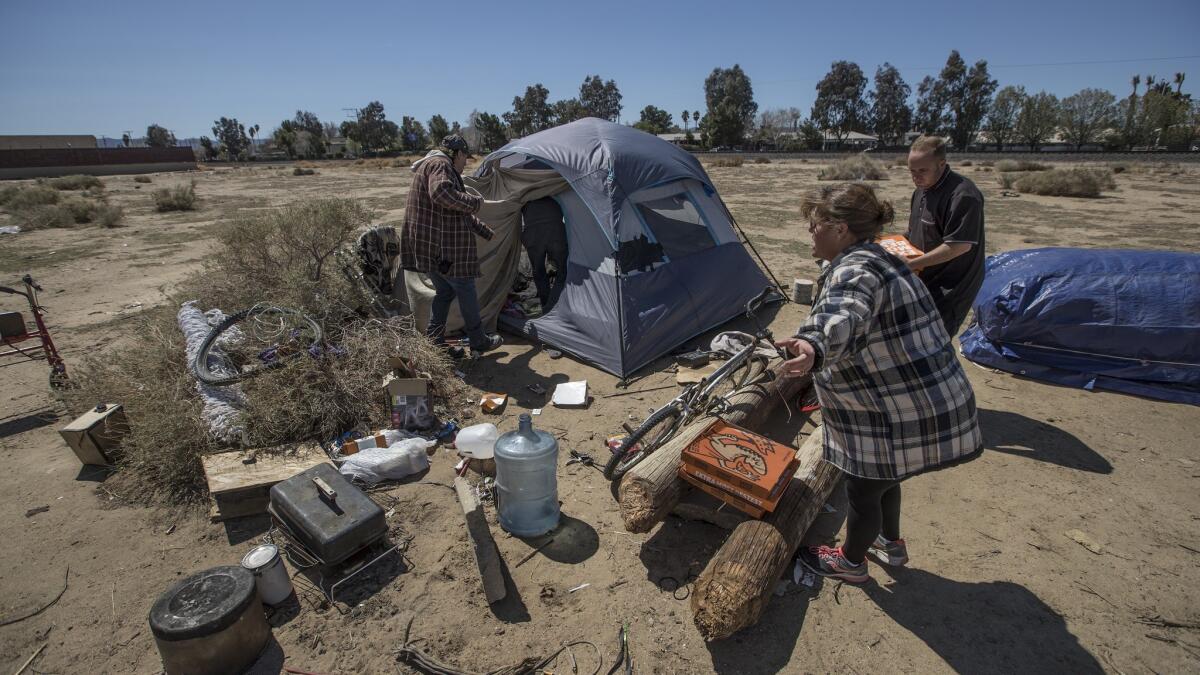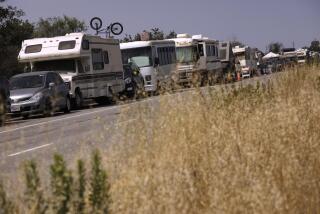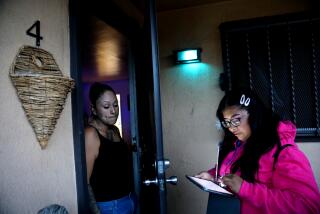L.A. County leaders seek to keep emergency shelter in Antelope Valley open

Declaring a “shelter crisis” in the Antelope Valley, Los Angeles County supervisors agreed Tuesday to keep an emergency homeless shelter operating throughout much of 2018.
They approved a motion directing the Los Angeles Homeless Services Authority to use Measure H funds for the 93-bed shelter, which is operated by the Salvation Army in a converted medical center.
The Antelope Valley’s homeless population increased by 50% from 2016 to 2017 — from about 3,000 to 4,500 — according to latest figures released by the homeless authority. But there are no year-round facilities to house homeless people.
The 108-bed Lancaster Community Shelter, the valley’s only drop-in homeless shelter, closed its doors in August after financial struggles.
The funds from Measure H — the county tax increase approved by voters in 2017 — will keep the emergency shelter open 24 hours a day through the end of October.
Tuesday’s action ensures residents will not lose “access to vital services that will help them permanently exit the cycle of homelessness,” Supervisor Kathryn Barger, who co-authored the motion with Supervisor Mark Ridley-Thomas, said in a statement.
The harsh winters and blazing summers in the Antelope Valley put those sleeping on its streets at risk.
Salvation Army Lt. Hector Acosta said extending operations at the emergency shelter only addresses a small aspect of the homelessness problem in the Antelope Valley.
“Having around 100 beds for more than 4,500 is the very least we could do. We need to extend our efforts,” he said.
The valley’s distance from urban centers, such as downtown Los Angeles, makes it difficult to get services to the area’s homeless people, said David Howden, director of the Corporation for Supportive Housing’s L.A. office.
“In other parts of the city or county that are more urban, it’s easier for agencies to grow and expand,” Howden said. “We need to help people already there providing resources and bring additional groups to meet community needs.”
In June, state Sen. Scott Wilk (R-Santa Clarita) accused the homeless services agency of shortchanging the Antelope Valley of federal homeless funds and called for an audit to review how the agency distributes its $100 million in federal aid.
Acosta said county officials have recently begun collaborating with homeless-service providers in the area to address the problem.
Twitter: @melissaetehad
More to Read
Start your day right
Sign up for Essential California for news, features and recommendations from the L.A. Times and beyond in your inbox six days a week.
You may occasionally receive promotional content from the Los Angeles Times.







